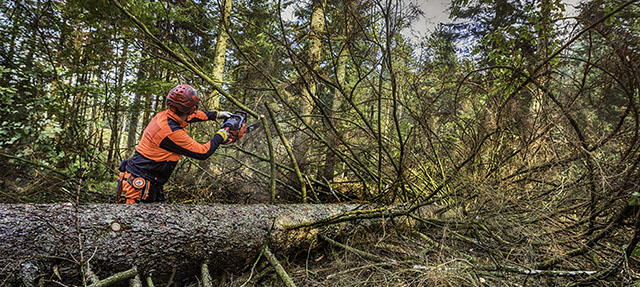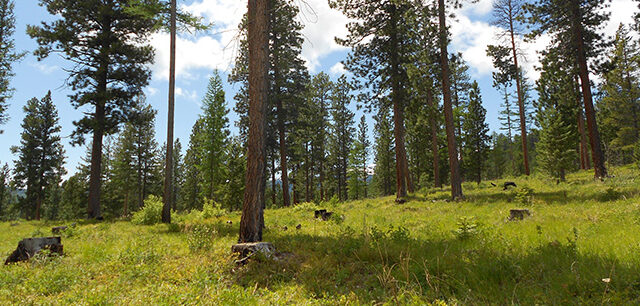This commentary was published in CalMatters on July 2, 2020.
The economic fallout from the COVID-19 pandemic is affecting urban and rural communities across California. Congress is exploring economic recovery legislation that includes investments in workforce development and infrastructure. And in Sacramento, there have been discussions about focusing future climate and natural resource bonds on economic recovery.
As federal and state decision makers evaluate the options, they should consider putting Californians to work on improving the health of the state’s headwater forests. This approach would alleviate economic hardships while reducing wildfire risk and generating a suite of other benefits for forest-based communities and the state.
California’s mountain forests are overly dense, riddled with dying trees, and increasingly vulnerable to wildfire, drought, and insects. Studies show that fuel reduction on US Forest Service lands in the Sierra Nevada headwater region would need to increase two- to six-fold to meaningfully improve forest resilience. As we outlined in our recent report on the benefits of forest management, increasing such efforts—and sustaining them over time—can reduce air quality impacts from wildfire, limit greenhouse gas emissions, protect water quality and enhance supply, and employ thousands of workers in a region where unemployment and low incomes are rife.
A range of skills are needed to make a dent in this problem, from laborers using hand tools to remove flammable vegetation to highly skilled foresters and wildlife ecologists. Yet, most Sierra communities currently lack a workforce sufficient to the task of ramping up forest management and sustaining it over time. Here’s how recovery spending could be used to jump-start a serious effort to bring our forests back to health and reduce wildfire risk:
- Expanded forestry workforce programs. Economic recovery spending could support the expansion of forest workforce development programs. For example, the Calaveras Healthy Impact Product Solutions and the Central Valley Forestry Corps programs provide employment opportunities to economically distressed and historically underserved communities for forest restoration work in the Sierra region.
- Strengthen forestry career-development pathways. Another promising idea is creating better education opportunities that lead to high-skill forest management jobs. Economic recovery spending could support forestry training for high school and college students—for example, by expanding access to training camps for low-income students or offering more scholarships for forestry degrees. When paired with workforce development programs like the California Conservation Corps, these investments would create a ladder to higher paying forest management positions.
- Incentivize investment in wood-utilization infrastructure. Thinning overly dense headwater forests requires infrastructure investments to make use of the removed wood. Innovative programs like the Tuolumne County Biomass Utilization Fund are aiming to stimulate local development of businesses that utilize wood generated in forest thinning. The fund offers low-interest loans to develop infrastructure and provide permanent jobs to low- and moderate-income individuals in Tuolumne County. Recovery spending could help expand the impact of this type of program or replicate it in other parts of the state.
These are just a few of the ways to strengthen California’s forestry workforce. Prior to the COVID-19 pandemic and related economic fallout, the lack of workforce was considered a major bottleneck to expanding the pace and scale of forest treatments. The current crisis adds an additional layer of urgency to relieve economic hardships, and provides an opportunity to invest in a forest resilience workforce that would pave the way for long-term forest stewardship.






